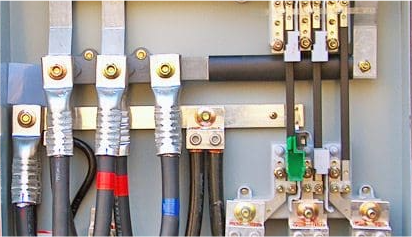
Five key factors to the correct cable selection and application
2023-12-14 15:36Cable selection and application
It is essential to know cable construction, characteristics, and ratings to understand problems related to cable systems. However, to correctly select a cable system and assure its satisfactory operation, additional knowledge is required. This knowledge may consist of service conditions, type of load served, mode of operation and maintenance, and the like.

The key to the successful operation of a cable system is to select the most suitable cable for the application, make a correct installation, and perform the required maintenance.
In this technical article, discussion is based on the correct cable selection and application for power distribution and utilization.
Cable selection can be based upon the following five key factors:
1.Cable installation
2.Cable construction
3.Cable operation(voltage and current)
4.Cable size
5.Shielding requirements
1.Cable installation
Cables can be used for outdoor or indoor installations depending upon the distribution system and the load served.
A good understanding of local conditions, installation crews, and maintenance personnel is essential to assure that the selected cable system will operate satisfactorily! Many times cable insulation is damaged or weakened during installation by applying the incorrect pulling tensions.
Designs of conduit systems not only should minimize the number of conduit bends and distances between manholes but also should specify the pulling tensions.
2.Cable construction
Selection and application of cable involves the type of cable construction needed for a particular installation. Cable construction involves conductors, cable arrangement, and insulation and finish covering.
3.Cable operation
The insulation of the cable must be able to withstand the voltage stresses experienced during normal and abnormal operating conditions. Therefore the selection of the cable insulation should be made on the basis of the applicable phase-to-phase voltage and the general system category which are classified as either 100%, 133%, or 173% insulation levels.
4.Cable size
The selection of cable size is based upon the following factors:
1.Current carrying capacity
2.Voltage regulation
3.Short circuit rating
These factors should be evaluated before selecting a cable size! In mant instances voltage regulation and short circuit rating factors are overlooked. This oversight can result in danger to property and personnel, as well as destruction of the cable itself.
5.Shielding
In selecting and applying cables at medium voltage, a major consideration involves whether the cable should be shielded or non-shielded. The conditions under which shielded cable is to be selected and applied is explained in the following discussion.
The application of shielded cable involves the following considerations:
1.Type of insulation system
2.Whether the system neutral is grounded or ungrounded
3.Safety and reliability requirements of the system
In power systems where there is no shield or metallic covering, the electric field is partly in the air and partly in the insulation system! If the electric field is intense, such as in the case of high and medium voltage, surface discharges will take place and cause ionization of the air particles. The ionization of air causes ozone generation, which can deteriorate certain insulations and finish coverings.
